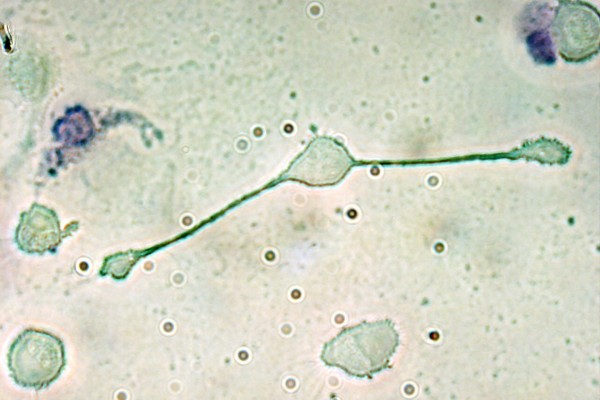
The chemical compound in cannabis, THC, appears to be able to damage and weaken the most common strain of the HIV virus.
Before you light up a spliff, though, this is only a preliminary result reached under laboratory conditions, and further research will be needed.
THC, or tetrahydrocannabinol, is the main psychoactive ingredient in cannabis — it’s the chemical that gets the user stoned. Synthetic versions of it have been developed for research purposes, and it’s this that was used to attack the HIV-1 virus, which represents the vast majority (more than 90 percent) of all HIV types.
The way it works is by interaction with the cannabinoid type-2 (CB2) receptor in white blood cells, specifically the macrophages. Macrophages are one of many types of white blood cell in humans. While the main cells, the lymphocytes, do the bulk of the work in fighting infection by tracking down and destroying germs with antibodies, macrophages form a kind of backup part of the immune system — attracted to damaged cells, they surround and engulf them while also alerting lymphocytes of new dangers.
Macrophages have an unpleasant weakness, though, in that they are one of the first types of cells to be infected by HIV when it enters the body. The virus can live inside macrophages for days, weeks or months, travelling around the body, infecting other cells and acting as an extremely effective pollinator of HIV.
Stopping the HIV virus from infecting macrophages is one method researchers are investigating, as it would dramatically curtail the speed at which the infection progresses and would give time for other antiretrovirals to help keep it at bay, or even remove it.
The CB2 receptor in macrophages is stimulated normally when THC enters the bloodstream, so nothing unusual there. However, it appears that macrophages that have their CB2 receptor stimulated are stronger when it comes to fighting and weakening the HIV-1 virus.
This was discovered when the research team from the Temple University School of Medicine in Philadelphia infected macrophages with the HIV-1 virus, before then exposing cell cultures to one of three types of synthetic THC that specifically target the CB2 receptor. Comparing these cell cultures after seven days against a control group revealed a clear decrease in the rate of HIV-1 infection. Effectively, the macrophages had become stronger at keeping the HIV-1 virus out.
Pathologist Yuri Persidsky from Temple University, one of the study’s authors, said: “The synthetic compounds we used in our study may show promise in helping the body fight HIV-1 infection. As compounds like these are improved further and made widely available, we will continue to explore their potential to fight other viral diseases that are notoriously difficult to treat.”
An added benefit of targeting only the CB2 receptor is that its only affect is to stimulate the macrophages — the psychoactive component of THC is experienced when the CB1 receptor gets targeted. Synthetic THC compounds can be produced to only target the CB2 receptor in this way. THC has also been shown in studies not to suppress the immune systems of those who take it, meaning that the findings could provide hints at a future drug that, in combination with other methods, could be used for suppressing the HIV-1 virus.
Photo: An example of a mouse macrophage reaching out to absorb to particles (possibly pathogens).












